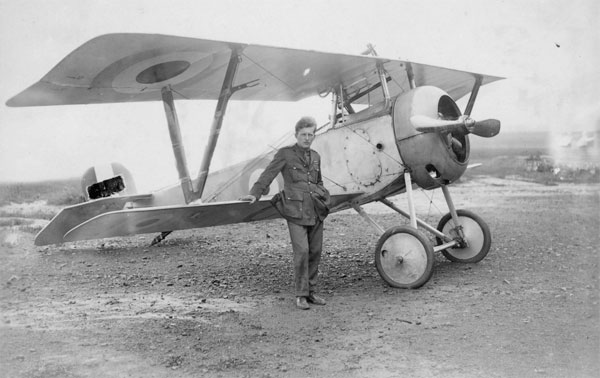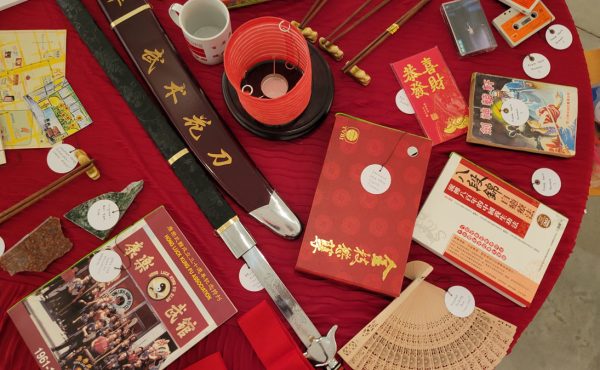One spring day in 1916, Billy Bishop woke up in the hospital. He was in London, England. Today, the building overlooking Bryanston Square is a prep school, but back in the days of the First World War it was a private home that had been turned into a temporary military hospital. The whole thing was spearheaded by one of the most famous aristocrats in England: Lady Carnarvon (the secret, illegitimate, but still-very-wealthy daughter of a Rothschild). And so, this wasn’t exactly your typical military hospital. It was much more like something out of Downton Abbey. There were butlers and footmen to serve breakfast in bed and bring the men the newspaper. The beds were made up with fine linen. Patients were fed with fresh food from the gardens. In fact, the hospital actually helped to inspire Downton Abbey: the television show is filmed at Lady Carnarvon’s country home, where she originally opened the hospital before moving it to Bryanston Square.
Now, at this point, Billy Bishop wasn’t famous yet. He wasn’t even a pilot yet. The young man from Canada had started out the war as an officer in the cavalry — trained to ride his horse into the onslaught of German machine guns. Luckily, he managed to get a transfer into the Royal Flying Corps before seeing any action, but even then he wasn’t allowed to fly the planes. He was an observer who sat in the aircraft as it flew over the front lines, taking notes on German positions.
He still got hurt, though. First, he got into a truck accident. Then, he was knocked out for two days after being hit in the head while working on a plane. When he recovered, he promptly injured his knee during a failed take-off: his airplane ploughed through a hedge and into a neighbouring field. On leave in London, he hurt his knee again: this time, he got drunk and fell off a gangplank. But through it all, he refused to get treatment. It wasn’t until he fell down the steps of the Savoy Hotel that he finally found himself in the care of the doctors, nurses and butlers of Lady Carnarvon’s Hospital for Officers.
And on that spring day in 1916, things were about to get weird. As Bishop woke from his slumber, he found one of the most famous and most influential women in all of England was sitting at his bedside.
Lady St. Helier was at the heart of social life in London. She was a Baroness, a writer, a philanthropist, even an alderman on the City Council. The parties she threw at her home were the place to be in the early years of the 1900s. Many of the greatest writers and most important politicians were known to be guests at 52 Portland Place: Thomas Hardy, Edith Wharton, David Lloyd George, W. Somerset Maugham… She even introduced Winston Churchill to his future wife — her niece — and then hosted their wedding reception.
But Billy Bishop didn’t know any of that. They’d never met before. He didn’t recognize her. He was Canadian; her name meant nothing to him. But she, by an exceptionally strange coincidence, knew exactly who he was.
“I saw your name on the hospital register,” she explained. “And I was sure that someone named William Bishop from Canada must be the son of my friend Will Bishop. And when I looked at you, I was sure of it.”
And she was actually right. At some point, while on a trip Ottawa, she’d been a guest at a reception held by the Prime Minister, Sir Wilfrid Laurier. For some reason, Bishop’s father — who was a relatively ordinary lawyer — was also there. He made enough of an impression that years later Lady St. Helier still remembered him fondly. And when she visited Lady Carnarvon’s hospital, the Bishop name stood out.
That coincidence changed Billy Bishop’s life.
Suddenly, he was a very well-connected young officer. Lady St. Helier invited him to spend the rest of his time recovering at her own home. The two became very close. Before long, she was introducing him as her grandson — and he, in turn, called her “Granny.” When his father had a mild stroke back in Canada, Lady St. Helier pulled some strings to get Bishop a leave from the military and a ticket on a ship back home. Thanks to her, he was able to spend a few months visiting with his father in Owen Sound and with his fiancée in Toronto. That trip may very well have saved his life: back in Europe, his squadron was being cut to pieces during the Battle of the Somme.
When he returned to England, he was still determined to become a pilot. But his application was being ignored. So once again, Lady St. Helier pulled some strings. And before he knew it, Bishop was in flight school.
That, of course, was a stroke of luck for the Royal Flying Corps. By the end of Bishop’s first week as a pilot, he’d already shot down five German planes and earned the title of “ace”. A few months later, he’d been awarded the Victoria Cross, faced off against the Red Baron, and set the record for the most enemy planes shot down by any pilot from the British Empire.
Whenever he was back in London, away from the front lines, he was staying at Lady St. Helier’s, drinking and dancing with the most famous and powerful people in England. By the time he got another leave to visit Canada during the autumn of 1917, he was an international celebrity in his own right.
And when he was back home in Toronto, he was wining and dining with the richest people in Canada, too. In another odd coincidence, Bishop’s fiancée was the granddaughter of our country’s most famous department store mogul: Timothy Eaton. Back before the war, the Eaton family hadn’t approved of the match. But now, things were different. Billy Bishop and Margaret Burden were married at Timothy Eaton Memorial Church on St. Clair West. By then, Bishop was so famous that a crowd of fans showed up at the church to cheer the newly weds on.
But that same fame would mean the end of Billy Bishop’s career. He was so famous that the Canadian government was beginning to worry: what would happen to morale if he were ever shot down? And so, they decided to ground him before it was too late. With the war still raging, the Empire’s greatest ace was ordered away from the front lines. The pilot was deeply disappointed. But he had no choice. Billy Bishop was famous. But he’d never fly a plane into action again.
A version of this post originally appeared on the The Toronto Dreams Project Historical Ephemera Blog as part of the Dreams Project’s tour tracing the history of Toronto in the UK. You can find more sources, photos, links and related stories there.
Photo: Billy Bishop via The Canadian War Museum.



